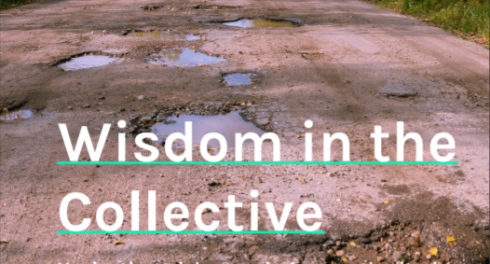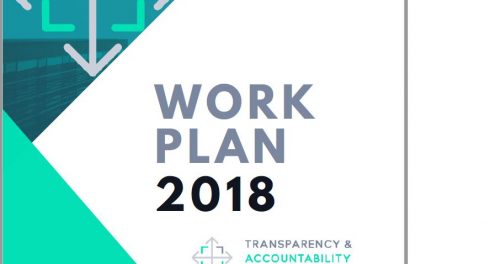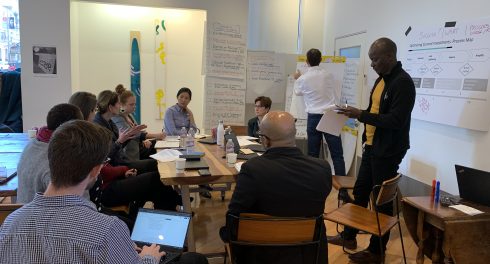Beneficial ownership transparency (BOT) is increasingly recognized as an integral element of anti-corruption and tax justice efforts – a far cry from a decade ago when the concept was still little recognized and very limited in practice. In the past 12 months, both Canada and the United States have moved to adopt federal beneficial ownership registries, building on similar efforts in jurisdictions ranging from the European Union to Chile to Nigeria.
Transparency and Accountability Initiative (TAI) funder members have supported advocates for BOT around the globe. It prompted us to ask what factors enabled this series of policy wins and what role funders played in the process. We, therefore, partnered with Intention 2 Impact to evaluate funder contributions to advancing BOT.
Today, on behalf of all TAI members, we are very excited to release the resulting set of resources:
- A full evaluation report
- An evaluation methods practice note
- Eight Case Studies
The main evaluation, backed by the cases, digs into the nature of BOT advances, while the methods note reflects on the challenges of assessing global advocacy outcomes and gauging individual stakeholder contributions (to be presented in a future blog).
We learned a lot along the way and hope you will dig into the report. In the meantime, here are a few highlights.
Grantee Partner and Funder Contributions
The evaluation affirms how smart advocacy and perseverance of TAI funders’ partners helped drive policy wins. What else was core to success? The strength of civil society networks and coalitions stood out, as well as the strength of grantee partner research and evidence in convincing policymakers.
Not surprisingly, grant funding was the most important funder contribution – and both flexible, multi-year support and more targeted project support in response to key openings were effective, particularly in combination. But funding was not the only funder contribution. Partners also valued direct advocacy support, technical assistance and capacity building, and connecting/convening.
This undertaking revealed challenges in accurately assessing total funder spend on BOT – not least in gauging percentages of core support provided to organizations working on multiple issues. Nevertheless, given an estimate of $35 million collective investment since 2013, BOT is an area that has yielded a strong “bang for the buck.”
Enablers and Barriers
This evaluation reveals the value of building ecosystems for change. A majority of grantee partners mentioned the importance of collaboration among different actors in achieving these BOT outcomes, not least North-South civil society partnerships. TAI member funding for anti-corruption and good governance more broadly reinforced BOT-specific support. For example, support to investigative journalists, who have played an important role in drawing attention to corporate ownership issues and keeping pressure on policymakers to follow through on BOT commitments.
Unsurprisingly, direct opposition by special interest groups (often very well-resourced ones) was a significant barrier to policy change efforts. Another major barrier was the technical nature of beneficial ownership issues – not the easiest to explain to your grandmother or inspire people on the streets.
So what?
With an eye to what might be generalizable beyond the BOT context, the evaluation team organized recommendations relating to the following framing points:
- Behind every win was the concerted, consistent, coordinated efforts of civil society.
- Collective, sustained funding played a major role in securing policy outcomes.
- Who you know is just as important as what you know.
- Policy change happens when preparation meets opportunity.
- Policy outcomes do not equate to policy impact. (This is particularly true with BOT, where the gap between policy adoption and effective implementation is still substantial – leaving the question of ultimate impact still largely unanswered.)
In sum, there is a lot of hard work that enables advocates to take advantage of what can be often fleeting moments for reform (pair with the recent Open Society Foundations research on windows of opportunity for anti-corruption reform). It is important for funders to give partners the tools and the support they need to seize those moments – including a funding mix that includes support for lobbying. For other specific recommendations, read the full report.
One recommendation that we will continue to grapple with is how best to engage the private sector in BOT programming (and many other themes). Civil society can be at odds with the business community, as evidenced in the Chile case study, but certain private sector players can be key allies in achieving reform, as explained in the Canada and U.S. case studies. Either way, big business has a big influence.
What next?
We hope this evaluation proves useful for funders supporting global norms development and for all those working on BOT issues. TAI members will continue to reflect on these insights to inform future grant making.
With that in mind, please tell us: What did we miss? What doesn’t ring true? What resonates most? Let us know via Twitter, Facebook, or LinkedIn.
Returning to the last of the takeaways – policy outcomes do not equate to policy impact. It is important to note that this evaluation did not attempt to evaluate the impact of BOT reforms, but rather TAI member and grantee contributions to the initial policy wins. Of course, that impact story is vitally important. The extent and effectiveness of implementation will take time to become clear and will depend not just on building up technical capacity and sustained political will but also on continued support by donors.
While it will take time for the effects of these measures to be fully apparent, we’re excited to flag that Open Society Foundations have commissioned a first impact review of the United Kingdom’s corporate registry disclosures. Stay tuned for that later in the year, and we look forward to a compelling evaluation of worldwide impacts another decade on!



